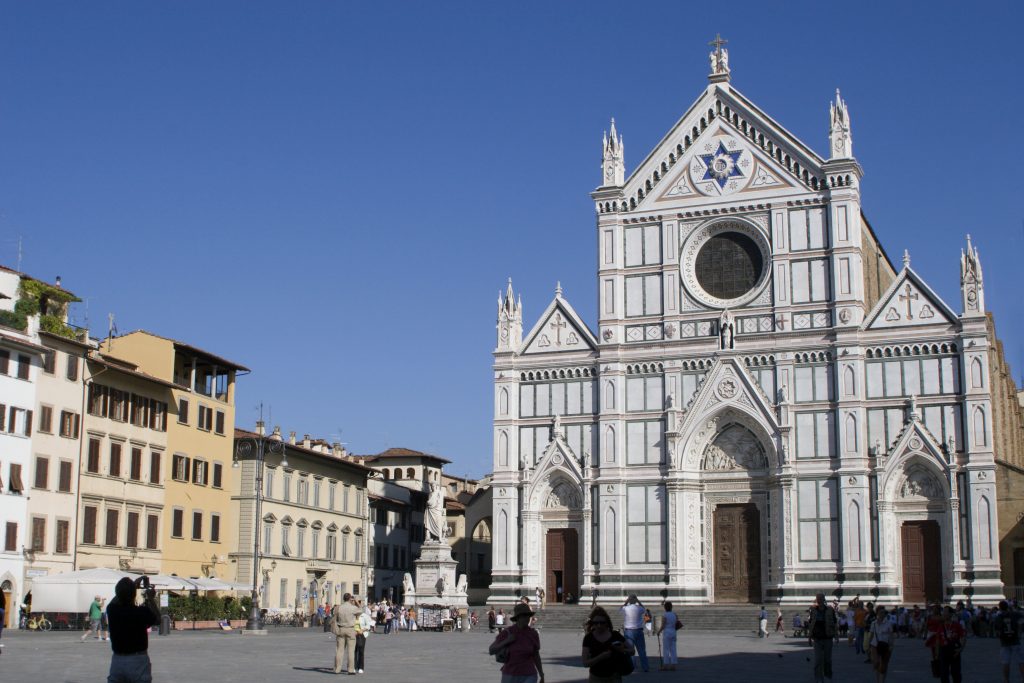Church of Santa Croce in Florence
The origins of the Santa Croce Church in Florence
The Santa Croce Church in Florence is a must-see, for its size and its big number of illustrious tombs, such as Michelangelo, Galileo, and Machiavelli. It is the second largest in the city and the largest Franciscan church in Italy (larger than Assisi). In 1217 Saint Francis of Assisi arrived in Florence. The city was fascinated by his personality. He preached the church’s return to holy poverty and he, the son of a wealthy merchant, abandoned his riches to live among the humble. A small church was first built to welcome his brothers in a swampy, rundown part of the city near the river. In time, the church got bigger, as did the city itself. In fact, in the XIII century, Florence experienced exceptional economical and demographic growth, followed by the expansion of the city walls that also included the Franciscan church. In 1294 the great architect Arnolfo di Cambio was called to begin work on a new project to reconstruct the Santa Croce Church in gothic style.
The tombs of Santa Croce Church in Florence
Galileo Galilei’s tomb in Santa Croce Church
The money was donated by the families of the neighborhood who wanted to be buried in the church. They were willing to pay large amounts of money. This is why Santa Croce Church is rich with chapels, where hundreds of people are buried. In Medieval times worshippers were buried in the ground and in the church there are 276 gravestones. Only in the Renaissance did they begin to create beautiful funerary monuments. Santa Croce Church hosts none other than the tombs of Michelangelo, Galileo, and Machiavelli. Michelangelo is the greatest artist of the Renaissance. He is famous for his statue of David and the frescoes in the Sistine Chapel. Galileo is the creator of the modern scientific method. This method is based on experiments that make it possible to demonstrate the laws of science. Machiavelli was the first to separate political action and Christian morality. He laid the foundation for the modern political mindset. In 1897 the Italian poet Ugo Foscolo, inspired by his visit to the tombs of such illustrious characters, wrote his best-known poem, The Sepulchres. Seeing those majestic funerary monuments caused him to fall into deep thought. They represented examples to follow for the living, models of civilization, passion, and talent. For this reason they inspired Foscolo to define Santa Croce as “the pantheon of Italian glory”.
The Leather School in Santa Croce Church
The Santa Croce Church also houses the Scuola del Cuoio (leather school). Here students from all over the world study artisan leather processing techniques. The school is a historical part of the church. During the second postwar period, Marcello Gori founded a school for war orphans to teach them the leather trade. 70 years later the school is still active and is the pride of Made in Italy. If you are curios about craftsmanship in Florence, take a look at our Tour of the Artisans of Florence. The ticket to Santa Croce costs €8. It includes entrance to the church, museum, the Pazzi Chapel, the cloister, and the Leather School. The Santa Croce Church is open daily from 9:30 a.m. to 5:30 p.m., Sunday from 12:30 p.m. after Holy Mass.
